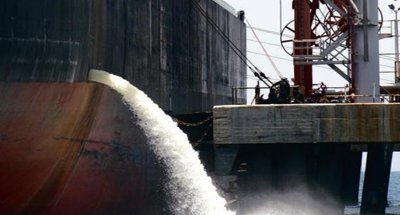A ballast water system is essential for the safe operation of a ship, but the operation of these systems causes significant threats to the environment and local economy.
A ballast water system allows a ship to pump water in and out of very large tanks to compensate for a change in cargo load, shallow draft conditions, or weather.
The capacity of ballast water tanks might be millions of gallons on a large vessel. This allows vessels to carry a light or heavy load while maintaining ideal buoyancy and handling conditions in all situations.
A ship might discharge all ballast water tanks to pass a shallow area or forward tanks only to raise the bow in rough open seas.
Physical Components of the system include; raw water intakes, large and small strainers, pumps, distribution pipes , ballast water tanks, treatment system, discharge system, and all the valves, sensors, and controls to run the equipment.
Invasive species are a significant threat to ecosystems and the economies of the affected areas. Researchers think that about one third of all documented invasive plants and animals are able to travel in the ballast water tanks of ships.
Zebra Mussels were introduced into Lake Saint Clair in 1988 when a ship emptied ballast water into the Great Lakes System. The Great Lakes hold nearly twenty percent of the earth’s fresh surface water in a watershed system. The non-native mussels eliminated native varieties once used by industry and have caused an estimated 7 billion dollars (US) in damage by encrusting or clogging underwater equipment essential to industrial and recreational activities.
Sea Lamprey and Spiny Water Fleas are organisms which feed off of host fish or compete with young fish for food. Many species of fish impacted by these invasive species have significant commercial or sporting value. These animals, and others, can live in fresh or salt water and may spread into inland waterways from saline ports and harbors.
Plants can also travel long distances in ballast water. Eurasian Milfoil is a surface plant which can clog equipment and deter recreation where it forms thick mats. Eurasian Milfoil was introduced to the United States in the 1940’s. Because the plant can produce large colonies from only one small fragment it is likely the plant was introduced in the ballast water of a ship.
For years amateurs and professional researchers have experimented with a huge array of weapons to combat invasive species in a ship’s ballast water. Most of the difficulty is due to the fact that huge volumes of water must be treated in a reasonably short period of time. Many land-based systems for treating public supplies takes many hours or days to pass water through their treatment systems.
A ship, on the other hand, must be able to discharge ballast water as quickly as cargo is loaded. In emergency situation ballast tanks need to empty as quickly as possible. A quick pass through most ballast water treatment systems is not enough to kill all the organisms that may be present.
Ballast Water Treatment Solutions and Shortcomings
- No discharge or ballast exchange rules – International, National, and Local law governs ballast water discharge. Some areas require ballast tanks to be sealed while others allow ballast to be exchanged. Ballast exchange allows tanks to be filled with local waters. Sealed ballast tanks may need to be emptied in an emergency situation and exchange is hindered by the fact that foreign waters must be discharged in close proximity to sensitive area for vessels to operate safely.
- Mechanical filters – Filters which are fine enough to remove the small immature young and eggs of invasive species clog quickly and require constant maintenance.
- Thermal treatment – The idea is to heat ballast water to kill any unwanted organisms. Unfortunately heating such a huge volume of water is impractical due to time and energy constraints.
- Other energy treatments – Ultraviolet, sonic, and other radiation have all been tried but have similar problems to thermal treatment; limits on time and energy.
- Chemical treatments – One of the earliest and most dangerous of all the methods used to control invasive species in ballast water. Chlorine bleach and other toxic chemicals will kill existing organisms but the release of these chemicals on the scale necessary to treat every ship would reach toxic levels for all aquatic life near the discharge points.
The future of ballast water treatment
Researchers are pursuing this difficult and financially lucrative goal at institutions around the world. In 2011 a team announced their successful small scale test of a two phase ballast water treatment system which eliminates unwanted organisms and produces sodium bicarbonate as a byproduct.
The new system is undergoing full size tests in the Great Lakes. The test for a scalable system is expected to perform well. It is not clear how regulatory agencies around the world will respond to the potential discharge of industrial amounts of sodium bicarbonate into their waters. Sodium bicarbonate is a common and safe chemical in small amounts, but studies must be conducted to assure this method is safe for long term use.
Copyright Ships & Ports Ltd. Permission to use quotations from this article is granted subject to appropriate credit given to www.shipsandports.com.ng as the source.

